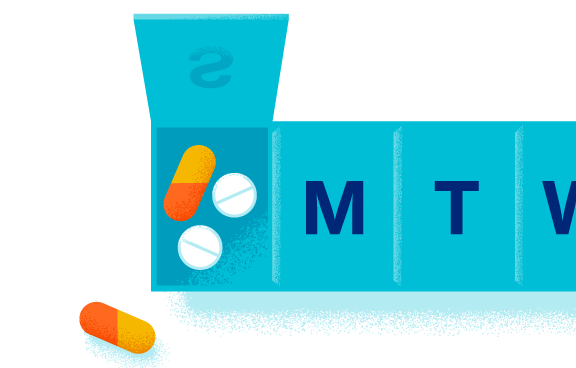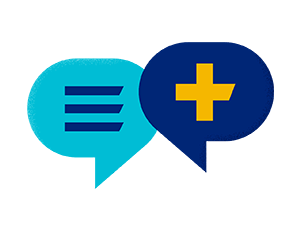Browse Medicare Part D prescription drug plans
What is a Medicare Part D plan?
A Part D plan is private insurance that offers prescription drug coverage. Original Medicare does not offer drug coverage.
Some Part D plans, called MAPD, are bundled with Medicare Advantage plans. Others are standalone plans, called PDP, that you can add to Original Medicare, a Medicare Supplement (Medigap) insurance plan, or a Medicare Advantage plan without drug coverage.
What are the benefits of a Part D plan from UnitedHealthcare?
Every Medicare Part D plan from UnitedHealthcare includes:
$0 copay for vaccines
Most Part D covered adult vaccines, including the shingles vaccine, have a $0 copay.
$0 cost share in catastrophic stage
All Medicare Part D covered drugs have a $0 cost share in the Catastrophic Coverage stage.
National Pharmacy Network
Get your plan's lowest cost-shares2 at 65,000+ Preferred Retail Network pharmacies.
Optum® Home Delivery Pharmacy
You may be able to save money when you get at least a 3-month supply of your medication delivered to you.
What don't they cover?
Part D plans generally don't cover drugs prescribed for anorexia, weight loss, weight gain, fertility, erectile dysfunction, cosmetic purposes or hair growth. They also don't cover prescription vitamins and minerals, non-prescription drugs, or drugs already covered by Medicare Part A and Part B.
To enroll in a Part D prescription drug plan, you must have Medicare Part A and/or Part B.
You can enroll in Original Medicare (Part A and Part B) online at www.SocialSecurity.gov , by visiting your local Social Security office, or by calling Social Security at 1-800-772-1213 (TTY users 1-800-325-0778), Monday through Friday, from 7 a.m. to 7 p.m.
If you choose to work past 65, you may be subject to a Part D late enrollment penalty. You can avoid this penalty if you can show that you have "credible coverage" equal to or better than a Part D plan.
What does a Part D plan cost?
Your plan costs may vary depending on the number of prescription drugs you need, how often you take them, whether you get them from a network pharmacy, and what coverage stage you are in.
What Part D plans are available from UnitedHealthcare?
UnitedHealthcare offers two Medicare Part D plans: AARP Medicare Rx Preferred and AARP Medicare Rx Saver. Plans may have different coverage levels, premiums, deductibles and copayments. Availability may depend on where you live.
AARP Medicare Rx Preferred
$1304 annual deductible for drugs in tiers 3, 4 and 5
Service area: National + U.S. Territories
Choose this plan: If you want our most extensive drug coverage and access to a broad pharmacy network
Drug list: Premium
Preferred Retail Network: Use a Preferred Retail Network pharmacy to get your plan's lowest cost-shares2
Optum® Home Delivery Pharmacy: $0 copay for a 90-day supply of Tier 1 and Tier 2 medication (typically generic drugs)5
AARP Medicare Rx Saver
$615 annual deductible
Service area: National
Choose this plan: If you receive Extra Help from Medicare or want a robust pharmacy network
Drug list: Standard
Preferred Retail Network: Use a Preferred Retail Network pharmacy to get your plan's lowest cost-shares2
Optum® Home Delivery Pharmacy: $6 copay for a 90-day supply of Tier 1 medication (generic drugs)5
Ready to decide?
To choose a Medicare prescription drug plan that's right for you:
- Know your coverage options
- Review the plan's drug list
- Check the plan's pharmacy network
- Consider total plan costs
- Ask a UnitedHealthcare Medicare Plan Expert
The UnitedHealthcare Right Plan Promise®
Be confident in your choice of Medicare plan
Our commitment to helping you find the right UnitedHealthcare Medicare plan. Enter your ZIP code and tell us what you want most, like included dental coverage, extra benefits, low monthly premiums and more.6
Drug cost estimator
Build a list of the medications you take, then estimate your drug costs for a specific plan based on your drug list.
Network pharmacy finder
Many plans offer cost savings if you use a preferred pharmacy. Find the network pharmacy closest to you.
You've got questions.
We've got answers.
Chat with UnitedHealthcare
Chat is currently unavailable.
Please try again later.
Find a plan
Meet with us
Make an appointment with a licensed insurance agent in your area.
Footnotes
Benefits, features and/or devices may vary by plan/area. Limitations, exclusions and/or network restrictions may apply. Not all plans available in all areas.
1 You will pay a maximum of $35 for each 1-month supply of Part D covered insulin drug through all drug payment stages except the Catastrophic Coverage stage, where you pay $0.
2 AARP® Medicare Rx Preferred from UHC (PDP)’s and AARP® Medicare Rx Saver from UHC (PDP)’s pharmacy network includes limited lower-cost pharmacies in rural MT, NE, ND, SD and WY. There are an extremely limited number of preferred cost share pharmacies in suburban MT. The lower costs advertised in our plan materials for these pharmacies may not be available at the pharmacy you use. For up-to-date information about our network pharmacies, including whether there are any lower-cost preferred pharmacies in your area, please call us or consult the online pharmacy directory.
3 Applies to covered adult Part D vaccines recommended by the Advisory Committee on Immunization Practices (ACIP).
4 Preferred plans in U.S. Territories have a $615 deductible and 25% coinsurance for tiers 1–5.
5 Optum® Home Delivery Pharmacy and Optum Rx affiliates may not be available in Arkansas.
6 The Right Plan Promise® is our commitment to provide you with tools and agent/producer support to help you find a plan in UnitedHealthcare’s Medicare plan portfolio that meets your needs. It is not a guarantee that UnitedHealthcare offers a plan that meets the needs of every consumer. Plan recommendations are based on the information that you provide regarding your health coverage needs. Requests to disenroll or change plans remain subject to applicable Medicare regulations and Federal and state laws/regulations.
$0 copay may be restricted to particular tiers, preferred medications, or home delivery prescriptions during the Initial Coverage stage and may not apply during the Catastrophic Coverage stage. Optum® Home Delivery Pharmacy and Optum Rx are affiliates of UnitedHealthcare Insurance Company. You are not required to use Optum Home Delivery Pharmacy for a 90-/100-day supply of your maintenance medication. Other pharmacies are available in our network. If you have not used Optum Home Delivery Pharmacy, you must approve the first prescription order sent directly from your doctor before it can be filled. Contact Optum Home Delivery Pharmacy any time at 1-888-658-0539 / TTY 711.





